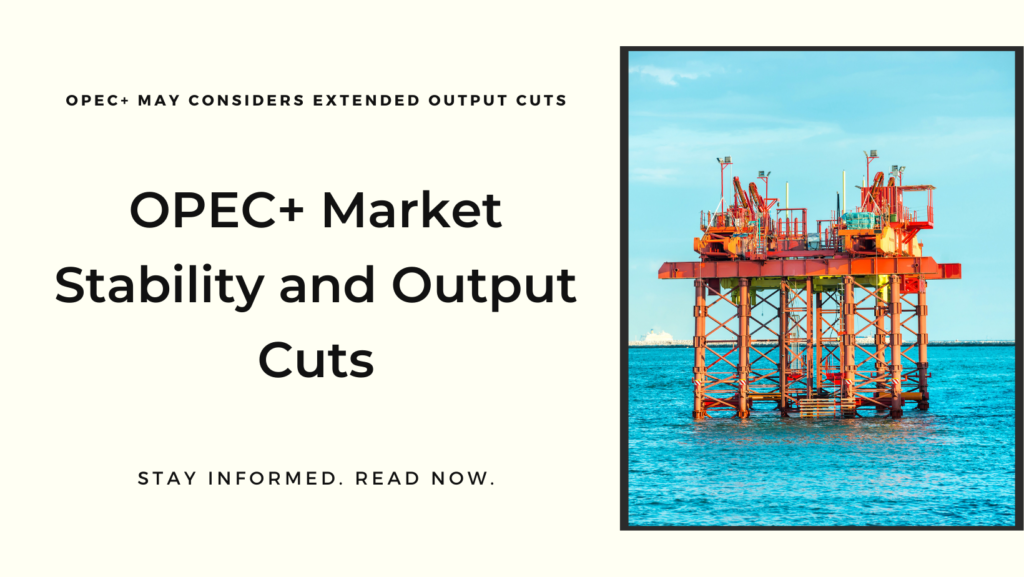Introduction:
In the ever-fluctuating landscape of global oil markets, the Organization of the Petroleum Exporting Countries and its allies, collectively known as OPEC+, are once again at a crossroads. As we approach a pivotal meeting, set against the backdrop of a stabilizing market, speculations are rife that the group might extend its production limits into the first quarter of 2024. This potential move is not just a matter of economic jargon; it has implications for the common man, influencing the prices we pay at the pump and the economic health of nations. Let’s delve into the why and how behind OPEC+’s considerations, exploring the factors at play and what it means for the ordinary citizen.

The Current Landscape OPEC+ :
As of now, the oil markets stand on solid ground, with positive inventory trends and robust demand projections providing a foundation of stability. Despite Saudi Arabia’s diminished influence in the market, the collective efforts of OPEC+ have maintained a delicate equilibrium. Goldman Sachs, the financial behemoth, hints at a one-in-three chance that the group might opt for further output reductions. This assessment takes into account intricate factors like time spreads, inventory levels, and Saudi Arabia’s role in the market dynamics.
The current collective cuts by OPEC+ total 5.16 million barrels per day (bpd), further supplemented by voluntary curtailments from key players like Saudi Arabia and Russia. These measures are not arbitrary; they stem from optimistic demand forecasts. OPEC envisions that exercising discipline in supply can bolster the overall health of the market. This, in essence, is a bid to prevent the seesawing volatility that can send oil prices on a rollercoaster ride.
Deliberations and Possibilities:
As the discussions unfold, there’s a looming possibility of a proportional cut ranging from 0.5 to 1 million bpd among major oil producers. This contemplation arises from concerns that Brent crude prices might dip below $80 per barrel in the first quarter of 2024 due to decreased demand. The big question is whether a cut of this magnitude is a prudent step to sustain prices and, consequently, market stability.
Goldman Sachs anticipates that Saudi Arabia and Russia, major players in this intricate chess game, might announce the extension of their voluntary cuts through Q1 of the upcoming year. This aligns with the cautious optimism surrounding the maintenance of stability in the face of near-average time spreads and the anticipated seasonal decrease in demand.
Impacts on the Common Man:
For the average consumer, these deliberations might seem distant from daily life, but they carry tangible consequences. A decision to extend output cuts could influence the prices we pay for fuel, impacting household budgets and the broader economic picture. The potential drop in oil prices, if the cuts are not implemented, may seem like a boon for consumers but could raise concerns about the health of the oil industry and, by extension, global economic conditions.
Conclusion:
As we stand on the brink of OPEC+’s crucial meeting, the decisions made within the confines of this gathering will reverberate through the intricate web of the global economy. The question of extending output cuts is not merely an economic puzzle; it’s a piece that affects the everyday lives of people around the world. Stay tuned as the world watches how OPEC+ navigates the complex waters of supply, demand, and market stability in an ever-changing economic tide. The outcomes may well shape the trajectory of oil prices, impacting our wallets and the economic course for the foreseeable future.
